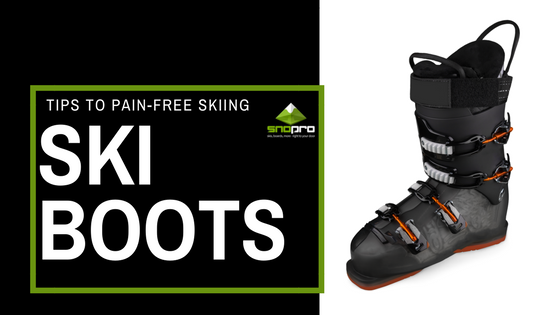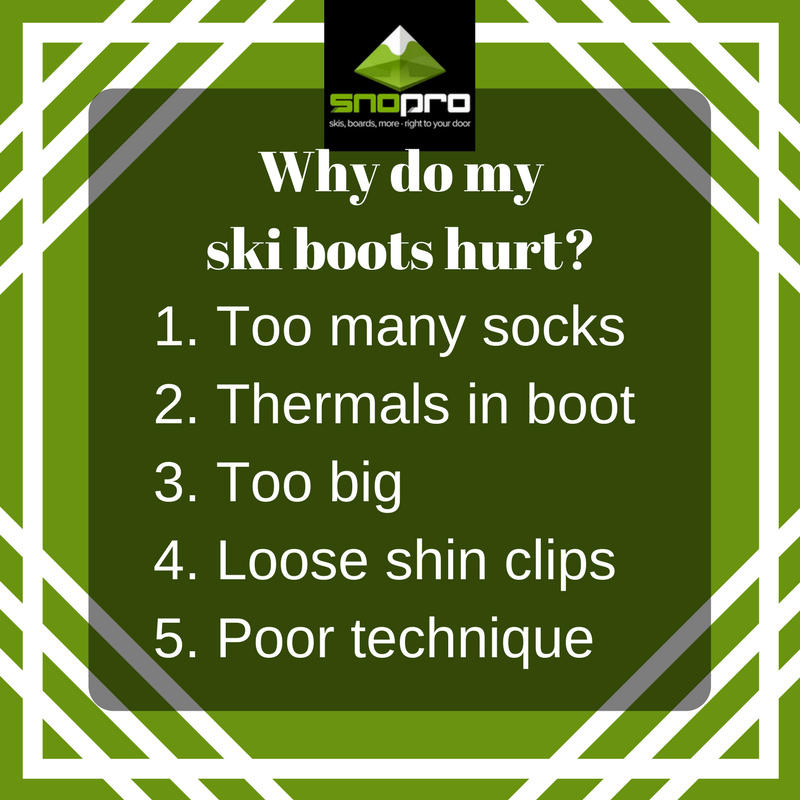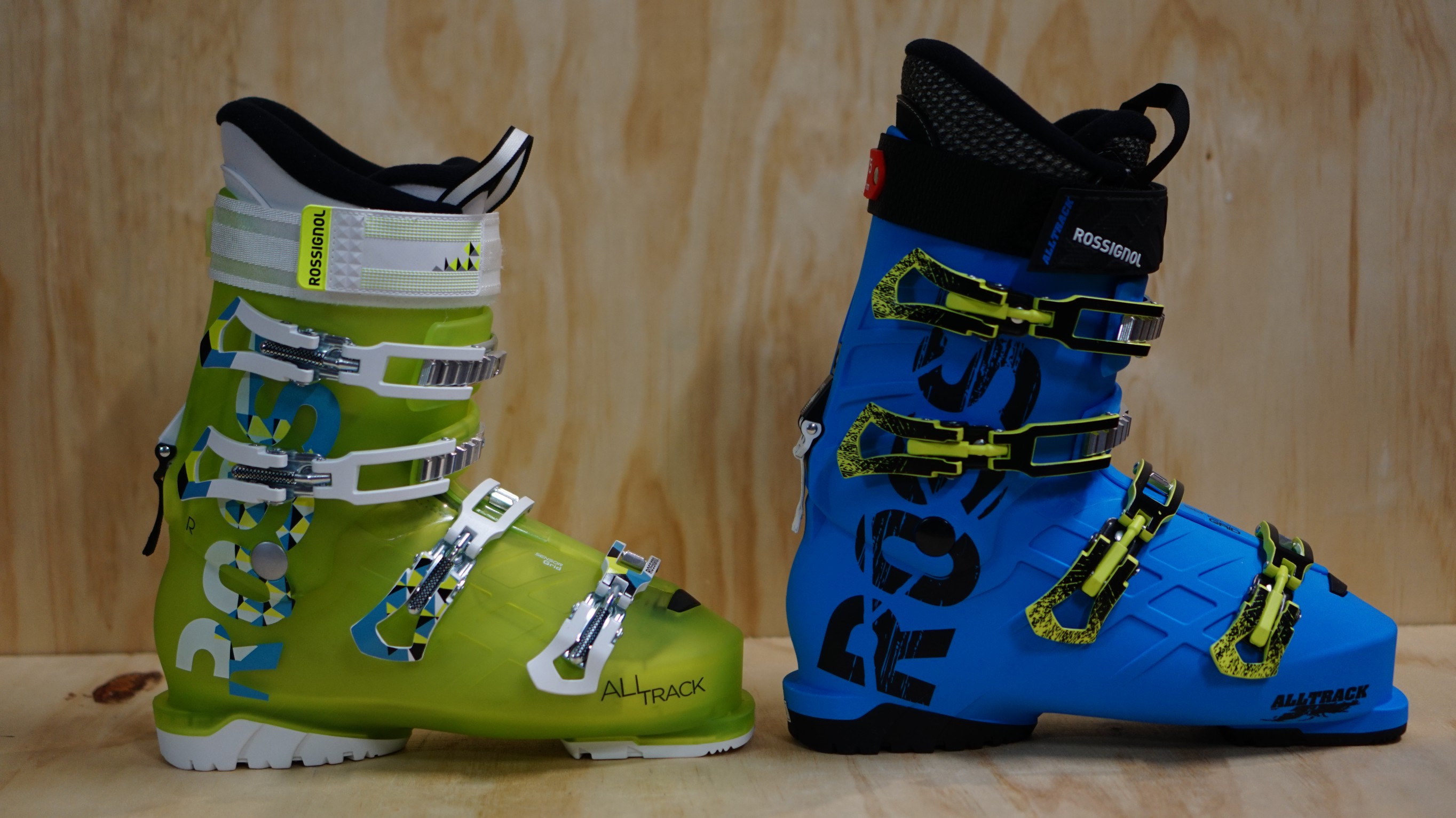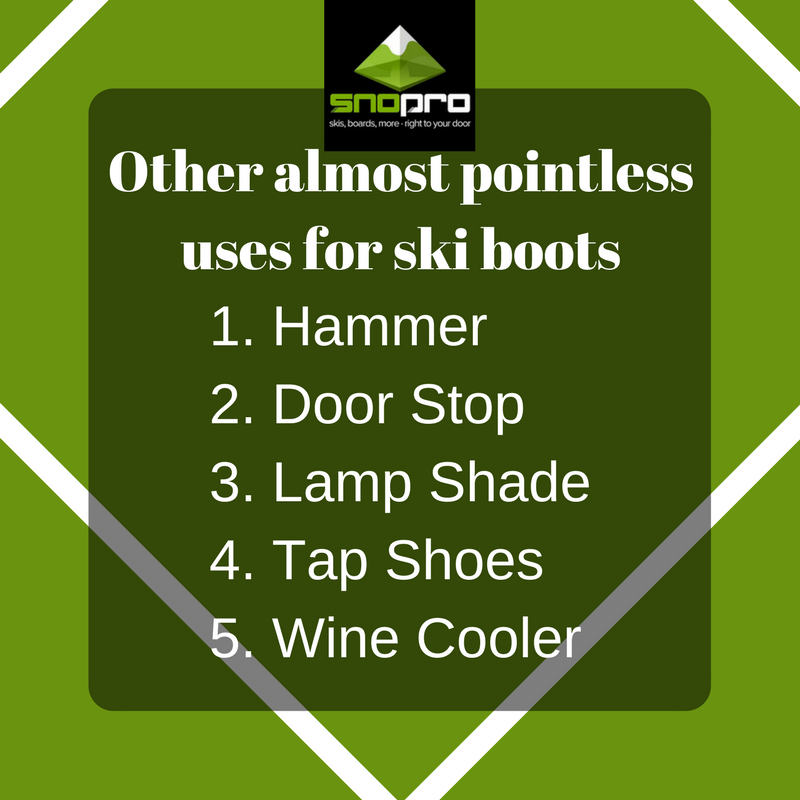Many skiers do not know how their ski boots should really fit. Thousands of people are skiing in boots that are the wrong size. This can ruin your skiing experience and holiday as a whole.

The best ski boot brand is different for everyone, it is important to pick a boot that fits rather than because you like the colour.
Please note that this is a guide to help you understand what you will be feeling in a ski boot. Everyone’s feet are different so you should always discuss your options with a trained boot fitter.
Why Do Ski Boots Hurt My Feet?

Ski boots that are too big often cause you more pain. When your foot is slipping and sliding around inside the boot it leads to bruised toes and blisters.
If you have had this then try going down a size, not up. Too much room allows your foot to bang around in the boot causing these problems.
A tight fit means the boot will move with your foot removing any rubbing, bruises and blisters. Make sure you are wearing a good pair of modern ski socks, as the wrong sock can also lead to similar problems.
Why Do Ski Boots Hurt My Shins?
Shin bang. Bruised shins are another thing that can hinder your skiing. Get your boots done up nice and tight around your leg so the cuff moves and flexes with your leg. Boots with room around the leg will allow your shins to bag and rub. Hence ‘shin bang’. Over a day's skiing, this will take its toll and it can become painful and even stop you from skiing until you recover.
Another common mistake is having thermals or other pieces of outerwear in the boot. The only things in the boot should be your sock, err and your foot... Small ridges and seams from other clothing can cause a lot of pain.
How Ski Boots Should Feel
Ski boots should be as tight fitting as possible. You need minimal foot movement inside the boot.
If your boot moves with your foot, your ski will move with your boot and in turn your foot. Allowing you to exert maximum control over your skis.
Conversely, if your foot moves and slips around inside the boot, your boot will not move accurately with your foot, so you will reduce control of your skis.
Ski shops can be busy and often hand you the size you ask for with no further help in the fitting process.
Be very aware that you are likely to be wearing street shoes a size bigger than you would a ski boot.
It may be wise to ask for a size smaller to start with to get that nice snug feel.
Your toes should be touching the end of the boot when you first put it on, it may even feel half a size too small.
Then as you buckle the ski boot up and flex forward (push your knees over your toes) you will feel some pressure release and a bit of room for your toes.
If the ski boots feel good in this position then you might be onto a winner.
Stood up straight or leaning back a ski boot SHOULD feel uncomfortable as this is not a natural skiing position.
Remember, the key position is when you are flexed forward in a ‘ski position’.

Ski Boot Width
Boot width is another factor. Different manufacturers tend to produce different shape and width of boot. For example, Head boots can be a wider fit whereas a Rossignol may be a lot thinner. Remember, you want a nice tight, snug, fit. If you can feel space around your foot or can slide your forefoot and/or heel around then get a change it up.
Should Your Heel Lift In Ski Boots?
Heel movement should be minimal to nil.
When you flex into the ski position, your heel inside the boot should stay flat and firm on the base. You will always be able to lift your heel if you physically try, just concentrate on the pushing your knees over toes in the flexed position.
If you are getting heel lift then ask the boot fitter for advice, maybe think about asking for a thinner boot or heel lifts that will compensate for this problem. Brands create completely different shape and feel to ski boots meaning they change dramatically.
Ski Boot Performance
Ski boots come in various levels of stiffness. A beginner or lightweight person should have a soft flex boot. (The flex is how much you can push your shin forward in the boot). Whereas an experienced or heavy skier should have something stiffer. A better skier will need a stronger boot because a well-honed technique will allow you to exert a greater force through the cuff (leg) of the boot. For example, a beginner may have a flex rating of around 80 and a racer will go into a 130+ flex boot.
Think about what you are doing on the mountain as your skiing improves. What are you focusing on? If speed is your game go for something a little stiffer maybe 110 or 120 flex rating. Freestylers will use a softer boot because of short sharp shin impact, you and your shins will not be thankful for spending a day on the park in a race boot.
Buying Ski Boots
Many people recommend buying boots. They are right. If you can afford to get yourself some custom ski boots fitted. Some shops mould the shell and inner of a boot to give you a perfect fit. It can be a great idea to get boots fitted during your ski holiday, this way you will be able to ski in them during the week and pop back into the shop until you get that perfect fit.
One last tip if you are getting the custom boots made is to avoid boot heaters. They can often get way too hot. So hot that you can actually push and mould the shell of the boot a little bit. This is a sure fire way to ruin you custom inner that you may have spent years getting just right. Ideally, just whip your inners out of the shell and let them dry naturally overnight.
Ski Boot Fitting Feel Check List
- Good quality thin ski socks
- Only the sock is in the boot
- Toes touch the end at first
- Toes are comfortable once flexed forward
- Snug but not crushing your foot
- Legs and shins are secure
- You can only fit two fingers down the back of the boot
- No heel movement when flexing forward
- No side to side movement in the forefoot
Still can't get on with your ski boots? Then maybe it's time to use one of our other almost pointless uses for ski boots...

If you have any questions about your Snopro ski boots please get in touch with a team member or visit the FAQ page.